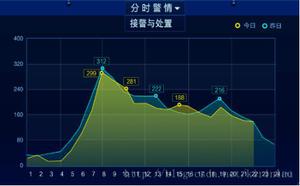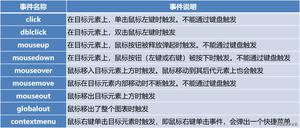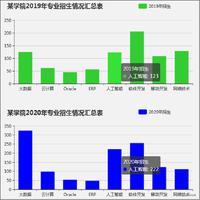Vue中使用ECharts画散点图加均值线与阴影区域

[本文出自天外归云的博客园]
需求
1. Vue中使用ECharts画散点图
2. 在图中加入加均值线
3. 在图中标注出阴影区域
实现
实现这个需求,要明确两点:
1. 知道如何在vue中使用echarts
2. 要知道如何在echarts散点图中画均值线和阴影区域
在下面的代码option对象的series属性中用到了markLine和markArea,标注最值用到了markPoint。
所以去官方文档搜索标线、标点、标图的关键字要搜mark。
如何在vue中使用echarts见文末。
需要注意的是vue的渲染时序,不要在页面没有渲染完就开始画图,那会找不到你定位id的元素。
如何解决找不到元素的问题呢?网上说是在mounted函数中调用nextTick,这种方法可以试试,我是没成功。所以我自己发明的解法如下:
以下的方法要放到vue文件的watch中,目的是监控showInfo和findAll两个变量的值的变化,一旦变量值变化则执行调用:
showInfo: function() { // 元素显示了开始画线,待优化,可以细分到不用showInfo控制,用每个chart的v-if分别进行控制,因为有时候可能没有图表数据
if (this.showInfo === true) {
this.findAll = false
this.timer = setInterval(() => {
this.findElements()
}, 1000)
}
},
findAll: function() {
if (this.findAll === true) {
console.log('Timer stop.')
clearInterval(this.timer)
}
}
其中用到的变量都要在data函数中声明赋适当的初始值:
1. this.showInfo控制页面元素的v-if显示开关,而showInfo变量的初始值一般为false,在mounted函数中我们可以把它的值设置为true,等页面加载完后打开显示开关
2. this.timer是定时器,这里用到setInterval函数做一个定时的查询,用来定时查找页面上用来画echarts的div是否已经出现在页面,都找到了就停止定时查找
3. this.findAll是一个signal,一旦为true说明所有元素都已找到,立即清空定时器this.timer,不再定时查询
以下代码放到vue文件的methods中,是watch变量所用到的一些辅助函数:
findElements() { if (this.findEleById('test_id_1')) {
this.if_find_test_img_1_id = true
}
if (this.findEleById('test_id_2')) {
this.if_find_test_img_2_id = true
}
if (this.findEleById('test_id_3')) {
this.if_find_test_img_3_id = true
}
if (this.if_find_test_img_1_id && this.if_find_test_img_2_id && this.if_find_test_img_3_id) {
this.findAll = true
}
},
findEleById(ele_id) {
var ele = document.getElementById(ele_id)
if (ele !== null) {
console.log('发现id为' + ele_id + '的元素')
return true
}
return false
}
ECharts设置相关的核心代码如下:
<template><el-row>
<el-col :span="24">
<div id="chartDivId" :style="{width: '100%', height: '500px'}"></div>
</el-col>
</el-row>
</template>
<script>
export default{
data() {
return {
imgData : {
'columns': ['c1','c2','c3'],
'rows': [
{
'c1': 'v1',
'c2': 'v2',
'c3': 'v3'
},
],
'mean': 2,
'y_top': 3,
'y_bottom': 1
},
methods: {
// 画图函数,传入散点图所在div的id和图表数据
drawImgChart(chartDivId, imgData) {
// 基于准备好的dom,初始化echarts实例
const myChart = this.$echarts.init(document.getElementById(chartDivId))// 绘制图表
var option = {
tooltip: {
trigger: 'axis',
showDelay: 0,
axisPointer: {
show: true,
type: 'cross',
lineStyle: {
type: 'dashed',
width: 1
}
}
},
visualMap: {
min: 0,
max: imgData.mean, // 渐变色最深色对应的y轴坐标
dimension: 1,
precision: 3,
orient: 'vertical',
right: 10,
top: 'center',
text: ['HIGH', 'LOW'],
calculable: true,
inRange: {
color: ['#f2c31a', '#24b7f2']
}
},
xAxis: [
{
type: 'category',
show: false,
scale: true,
splitLine: {
show: true
},
data: imgData.columns, // x轴的数据
axisLabel: {
interval: 0,
rotate: 70
}
}
],
yAxis: [
{
type: 'value',
scale: true,
splitLine: {
show: true
},
axisLabel: {
formatter: '{value} s' // y轴数据的格式 xx s
}
}
],
series: [
{
type: 'scatter',
symbolSize: 5,
data: imgData.rows,
// 设置最大值点和最小值点
markPoint: {
data: [
{ type: 'max', name: '最大值' },
{ type: 'min', name: '最小值' }
]
},
// 设置平均值线
markLine: {
lineStyle: {
normal: {
type: 'solid'
}
},
data: [
{
name: '平均值线',
yAxis: imgData.mean // 数值类型,对应y轴坐标
}
]
},
// 设置阴影区域
markArea: {
silent: true,
itemStyle: {
normal: {
color: '#E8E8E8',
borderWidth: 1,
borderType: 'dashed'
}
},
data: [[{
name: '正常值范围区间',
yAxis: imgData.y_top // 阴影区域上边界
}, {
yAxis: imgData.y_bottom // 阴影区域下边界
}]]
}
}
]
}
myChart.setOption(option)
}
}
}
}
}
谈谈封装
有时候封装的不好不如不封装,封装对外的接口如果不是大家需要的功能,反而相当于给被封装的对象关上了一道门,拒人于封装之外。
比如eleme和baidu维护的两版针对vue使用的vchart,我觉得现在的封装程度就是能用一些echart的基本功能,很多细节都没有封装好。
所以,即使vue不推荐直接操作dom元素,但是这次要在散点图中画线我还是选择用原装的echarts。
更多资料
1. ECharts官网在线调试散点图
2. Vue项目中如何使用ECharts
以上是 Vue中使用ECharts画散点图加均值线与阴影区域 的全部内容, 来源链接: utcz.com/z/376579.html







